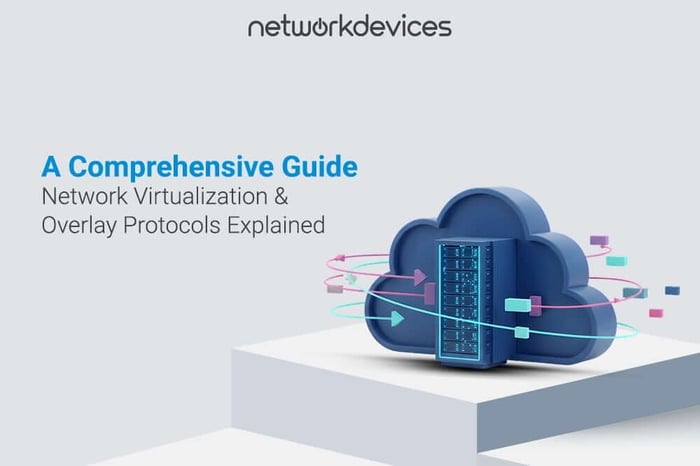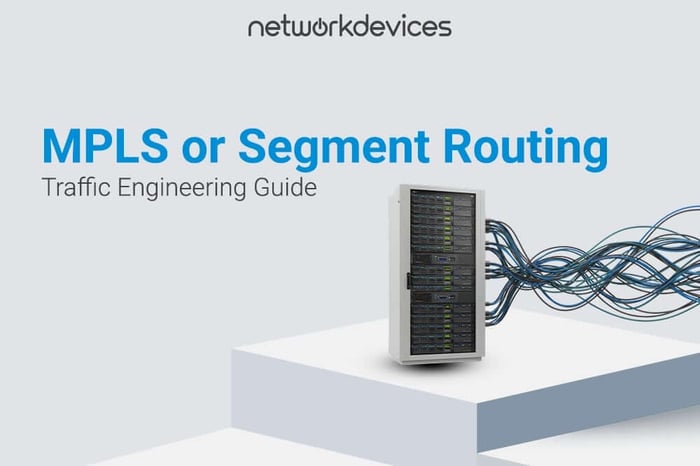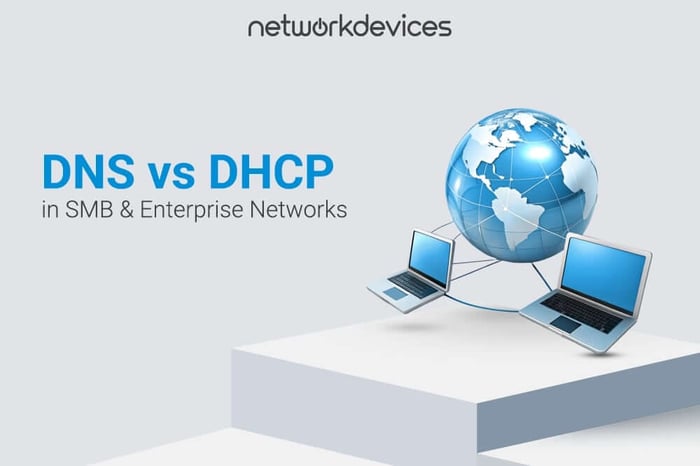You have no items in your shopping cart.

Network Virtualization & Overlay Protocols Explained
Network virtualization has redefined how modern IT infrastructures scale and operate. By abstracting network services from physical hardware, it offers organizations unprecedented flexibility and control over their network environments.
At the core of this transformation are overlay technologies such as VXLAN, GRE, NVGRE, and GENEVE. These protocols enable logically isolated networks to operate over shared infrastructure—empowering multi-tenant cloud environments, hybrid deployments, and next-generation data centers.
This comprehensive guide explores these critical technologies, their architectural foundations, real-world applications, and how overlay and underlay networks integrate to deliver secure, high-performance networking in today's cloud-centric world.
What Is Network Virtualization?
Network Virtualization (NV) abstracts traditional networking elements—such as switches, routers, and firewalls—into software-defined constructs. These virtual networks share the same physical infrastructure but operate independently, each with unique configurations, routing policies, and security rules.
Key Benefits of Network Virtualization
Enhanced Isolation: Virtual networks operate independently without interference, providing clean separation between environments.
Unlimited Scalability: Networks can be rapidly expanded or reconfigured without the constraints of physical hardware.
Resource Efficiency: Virtualization maximizes hardware utilization, significantly reducing capital expenditure.
Centralized Management: Integration with SDN platforms enables simplified orchestration and policy enforcement across the entire network fabric.
Overlay Networks: Virtual Layers Over Physical Infrastructure
Overlay networks are virtual networks that run on top of a physical (underlay) IP infrastructure. They use tunneling protocols to encapsulate traffic, providing logical segmentation, multi-tenancy, and flexibility in complex environments.
These technologies address critical networking challenges including:
- Limited VLAN scalability
- Cross-data center connectivity requirements
- Secure workload isolation
- Agile network provisioning
Let's explore the four most prominent technologies powering today's overlay networks.
VXLAN (Virtual Extensible LAN)
VXLAN extends traditional VLAN capabilities by encapsulating Layer 2 Ethernet frames in Layer 3 UDP packets. It's currently the most widely deployed overlay protocol in enterprise data center fabrics.
Core VXLAN Features
UDP Encapsulation: VXLAN wraps Layer 2 frames inside UDP packets, allowing them to traverse Layer 3 networks without modification.
Massive Scalability: With support for up to 16 million virtual network identifiers (VNIs), VXLAN dramatically exceeds the 4,096 segment limit of traditional VLANs.
Flexible Forwarding Options: VXLAN supports multicast for efficient transmission, plus unicast and ingress replication for environments where multicast isn't feasible.
VXLAN Use Cases
Cloud Multi-Tenancy: VXLAN provides isolated tenant networks within large-scale cloud environments, ensuring complete separation between customers.
Data Center Interconnect (DCI): It enables seamless Layer 2 connectivity across geographically distributed data centers, maintaining network continuity.
GRE (Generic Routing Encapsulation)
GRE is a lightweight tunneling protocol that creates point-to-point connections over IP networks. While simpler than other overlay technologies, GRE offers exceptional versatility for encapsulating various network protocols.
Core GRE Features
Protocol Flexibility: GRE can transport virtually any Layer 3 protocol, including IPv4, IPv6, and legacy protocols.
Simple Implementation: With minimal configuration requirements, GRE is ideal for rapid deployment scenarios.
Basic Functionality: GRE provides no built-in encryption or compression, focusing instead on straightforward encapsulation.
GRE Use Cases
Site-to-Site Connectivity: GRE efficiently connects remote locations over IP networks, creating virtual private connections.
Security Enhancement: When paired with IPsec, GRE tunnels provide secure communications across untrusted networks.
NVGRE (Network Virtualization using GRE)
NVGRE builds upon the GRE foundation to support sophisticated Layer 2 overlays with unique identifiers, making it suitable for large-scale virtualized environments.
Core NVGRE Features
Layer 2 Over IP: NVGRE encapsulates Ethernet frames within GRE tunnels for broad compatibility across different network segments.
Advanced Segmentation: The protocol supports millions of isolated tenant networks within shared infrastructure.
Microsoft Integration: NVGRE sees frequent deployment in Microsoft Azure environments and Windows Server deployments.
NVGRE Use Cases
Enterprise Virtual Networks: NVGRE has gained particular popularity in Microsoft-centric cloud infrastructures.
Hybrid Cloud Extensions: Organizations use NVGRE to securely bridge on-premises environments with public cloud resources.
GENEVE (Generic Network Virtualization Encapsulation)
GENEVE represents the evolution of overlay protocols, designed to improve upon both VXLAN and NVGRE. Its flexible, extensible architecture makes it ideal for next-generation SDN and NFV implementations.
Core GENEVE Features
Extensible Headers: GENEVE supports custom metadata through option headers, enabling advanced network services and telemetry.
Comprehensive Multi-tenant Support: The protocol provides strong isolation mechanisms across complex multi-tenant infrastructures.
Protocol Flexibility: GENEVE efficiently handles both Layer 2 and Layer 3 frames, adapting to diverse networking requirements.
GENEVE Use Cases
Cloud-Native Environments: GENEVE excels in dynamic, policy-driven network environments supporting containerized workloads.
SDN/NFV Deployments: The protocol integrates seamlessly with SDN controllers, enabling agile service chaining and network function virtualization.
Overlay & Underlay Architecture: The Foundation of Modern Networks
In today's data centers and cloud designs, overlay and underlay networks must work in perfect harmony to deliver reliable and scalable services. Each layer serves a distinct purpose while complementing the other.
The Underlay Network
The underlay network comprises the physical infrastructure—switches, routers, cabling—that provides fundamental IP connectivity. This foundation must deliver consistent performance to support all overlay traffic.
Key Underlay Design Considerations
Performance Optimization: Underlay networks must provide high throughput and low latency to support latency-sensitive applications.
Redundancy Planning: Robust designs eliminate single points of failure through redundant components and paths.
Protocol Selection: Most modern underlay networks leverage routing protocols like BGP, OSPF, or IS-IS for efficient packet delivery.
Essential Underlay Components
The physical Layer 3 IP network typically adopts spine-leaf or similar topologies optimized for east-west traffic patterns. These architectures provide predictable performance and simplified scaling for data center workloads.
The Overlay Network
Built on top of the underlay, the overlay network creates logical segmentation using technologies such as VXLAN, GRE, NVGRE, or Geneve. This virtualization layer enables multi-tenancy, security isolation, and network agility.
Key Overlay Design Considerations
Tunnel Management: Overlay networks create encapsulated pathways for traffic, requiring careful design for optimal performance.
Segmentation Strategy: Proper overlay configuration ensures traffic from different tenants or applications remains isolated.
Control Plane Architecture: Most overlay implementations use SDN controllers, such as Cisco ACI, VMware NSX, or open-source alternatives, for centralized management.
Essential Overlay Components
Overlay networks consist of tunneling endpoints, virtual switches, SDN controllers, and policy engines. Together, these components create flexible and programmable network environments that adapt to changing business needs.
Integrating Overlay and Underlay Networks
Seamless integration between overlay and underlay networks is critical for both performance and operational efficiency. Organizations must address several key challenges to achieve optimal results.
Integration Challenges
Address Coordination: Overlay and underlay addressing schemes must be carefully coordinated to prevent routing conflicts.
Visibility Limitations: The abstraction between layers can complicate troubleshooting and performance monitoring.
Performance Impact: Encapsulation overhead can affect throughput and latency if not properly optimized.
Best Practices for Integration
1. Implement consistent addressing schemes across both layers to prevent conflicts and simplify troubleshooting.
2. Deploy comprehensive monitoring tools that provide visibility into both overlay and underlay components.
3. Leverage hardware offloading capabilities where available to minimize CPU overhead from encapsulation processing.
4. Document interdependencies between virtual and physical components to accelerate problem resolution.
Security in Network Virtualization Environments
While virtualization and overlay technologies deliver unprecedented flexibility, they also introduce unique security considerations. Understanding these challenges is essential for building secure network architectures.
Critical Security Challenges
East-West Traffic Blind Spots: Traditional perimeter defenses overlook the substantial lateral traffic flowing between virtualized workloads.
Lateral Movement Risk: Without proper segmentation, attackers can freely move between workloads once they breach the perimeter.
Controller Vulnerabilities: Centralized SDN controllers represent high-value targets for attackers seeking network control.
Data Protection Gaps: Overlay traffic traversing multiple infrastructure segments requires encryption to prevent eavesdropping.
Resource Exhaustion Attacks: Controllers and virtualization components face DDoS and resource starvation threats.
Multi-Tenant Compliance: Shared infrastructure creates regulatory challenges when different tenants have varying compliance requirements.
Security Best Practices for Overlay Networks
1. Implement Microsegmentation: Deploy workload-level security policies that restrict lateral movement between application components.
2. Adopt Zero Trust Architecture: Verify every access request, regardless of source location, and enforce least-privilege access controls.
3. Enable End-to-End Encryption: Protect both control plane and data plane traffic from interception and tampering.
4. Deploy Comprehensive Monitoring: Implement SIEM, NDR, and flow analysis tools to detect anomalous behavior in real-time.
5. Enforce Strong Authentication: Require multi-factor authentication and implement fine-grained role-based access control (RBAC) for administrative access.
6. Implement DDoS Protection: Deploy distributed control planes and rate-limiting to protect against resource exhaustion attacks.
7. Conduct Regular Security Assessments: Perform frequent audits and penetration tests to identify vulnerabilities before attackers do.
8. Leverage Vendor Security Controls: Utilize the native security capabilities within platforms like Cisco ACI, VMware NSX, or Juniper Contrail.
Conclusion
Network virtualization and overlay technologies—such as VXLAN, GRE, NVGRE, and Geneve—have become the backbone of modern cloud and data center architectures. These innovations enable the flexible, scalable, and isolated network environments essential for multi-tenant workloads, hybrid cloud deployments, and dynamic application requirements.
The strategic integration of overlay and underlay networks, combined with robust security controls, creates infrastructure that balances performance, agility, and protection. This foundation supports digital transformation initiatives while accommodating ever-changing business needs.
By understanding the unique characteristics and capabilities of these technologies, organizations can architect network environments that effectively support their current requirements while building flexibility for future innovation.






